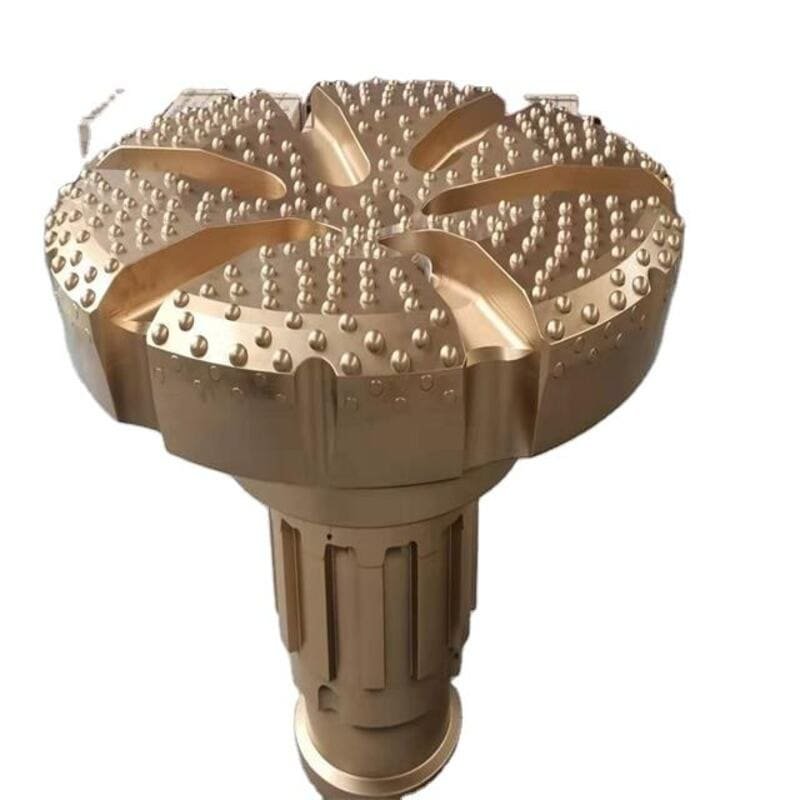Do you struggle with DTH drill bits getting too hot? Many people experience this frustrating problem.
Avoiding overheating in DTH drill bits is very important. Adjust drilling parameters to suit conditions. Proper cooling really matters. Maintain enough lubrication at all times. These methods reduce heat generation. Prolong the lifespan of drill bits with these steps. Operational efficiency is often improved this way.
I recall a very tough day on site when my drill bit got too hot. I was really searching for answers. After trying different things, I found that adjusting drilling settings and using the right cooling changed everything. Watching air pressure is like giving your bit a cool breeze. Regular lubrication is its shield. These steps stopped the overheating and helped my equipment last longer. Let's explore these methods more and forget about overheating problems!
Optimizing drilling parameters can prevent DTH bit overheating.True
Adjusting drilling speed and pressure helps manage heat generation in DTH drill bits, reducing the risk of overheating.
Proper lubrication has no effect on drill bit temperature.False
Adequate lubrication is crucial for reducing friction and heat, thus preventing overheating in DTH drill bits.
What Really Causes Overheating in DTH Drill Bits?
Have you ever had problems with DTH drill bits getting too hot? I have experienced this issue as well. Understanding the reasons for this common problem is really important. We need to prevent it to keep drilling work smooth and efficient.
**Overheating happens often in DTH drill bits due to wrong settings, bad cooling systems, poor lubrication, debris buildup, wrong bit choice and no regular upkeep. Fixing these issues early stops heat problems and helps drill work last longer and work better.
Key Causes of Overheating in DTH Drill Bits
DTH (Down-The-Hole) drill bits are really strong tools. But they get into trouble when they overheat. This occurs because of several important reasons affecting how they work. Let’s look at these together. This helps avoid annoying downtime.
Incorrect Drilling Settings
Adjusting drilling settings is crucial for maintaining efficiency.
- Rotation Speed꞉ High RPMs can create extra heat, especially in hard places. Finding the right speed is vital. It really matters.
- Weight on Bit (WOB)꞉ Too much weight on the bit increases friction and causes overheating. I’ve seen this before - it was not great!
- Air Pressure꞉ Low air pressure hurts cooling efficiency. It’s like using a small straw for a thick drink!
Monitoring these settings as you drill helps improve performance dramatically and stops overheating.
Bad Cooling Systems
The cooling system is extremely important during drilling.
- Air Circulation꞉ The air supply acts like the bit’s personal air cooler, helping reduce heat effectively.
- Flushing Mechanism꞉ Proper flushing is key to removing debris that increases friction and heat.
Regularly checking air pressure systems keeps cooling efficient - don't forget this step!
Poor Lubrication Practices
Lubrication reduces friction and heat.
- Use Quality Lubricants꞉ Always apply top-quality lubricants often; they reduce wear on the bit significantly.
- Lubrication Schedule꞉ Keeping a steady lubrication routine has made maintaining bit performance much easier over time.
Debris Buildup
Debris around the drill bit increases friction, leading to overheating. Keeping it clean is necessary.
- Flushing Holes꞉ Bits with good flushing holes help release heat, saving a lot of trouble.
- Regular Inspection꞉ Checking for debris regularly stops future performance problems.
Wrong Bit Choice
Picking the right drill bit for the specific geology stops overheating.
- Material Compatibility꞉ The drill bit material must match the rock type being drilled. The correct match is very important!
- Bit Design꞉ Bits designed for specific jobs reduce heat greatly during drilling.
Ignoring Regular Maintenance
Skipping routine maintenance causes several issues, including overheating.
- Inspection of Components꞉ Inspecting seals and connections for air leaks is crucial for smooth operations.
- Timely Repairs꞉ Fixing small problems early prevents overheating and saves a lot of hassle later.
By keeping these factors in mind and acting on them early, we can manage overheating in DTH drill bits well, ensuring they stay good and work well during drilling. Let’s keep our drills cool and projects moving forward!**

Overheating in DTH Drill Bits
Overheating in DTH drill bits is more than a technical problem. It probably leads to costly delays and affects project timelines. In my experience, a few important factors really matter. Let’s explore these causes and discuss possible solutions.
1. Incorrect Drilling Parameters
Adjustments to drilling parameters are crucial.
- Rotation Speed: High RPMs can generate excess heat, particularly in hard formations.
- Weight on Bit (WOB): Too much weight can increase friction, leading to overheating.
-
Air Pressure: Insufficient air pressure may impair cooling efficiency.
By monitoring these parameters in real-time, operators can adjust them to optimize performance and prevent overheating.
Parameter Ideal Range Impact of Mismanagement Rotation Speed Varies by material High speeds can lead to overheating Weight on Bit Depends on bit type Excessive weight increases friction Air Pressure 20-30 psi (approx) Low pressure hinders cooling
2. Ineffective Cooling Systems
The cooling system is vital for maintaining optimal temperatures during drilling operations.
- Air Circulation: The air supply acts like a cooling mechanism, dispersing heat.
-
Flushing Mechanism: Proper flushing removes debris that can cause additional friction.
Regular checks on air pressure systems ensure efficient cooling, preventing overheating. Learn more about cooling systems1.
3. Poor Lubrication Practices
Lubrication plays a significant role in reducing friction and consequently heat generation.
- Use Quality Lubricants: Regular application of high-quality lubricants minimizes wear on the bit.
- Lubrication Schedule: Establishing a consistent lubrication schedule helps maintain bit performance over time.
4. Debris Accumulation
Accumulated debris around the drill bit can cause increased friction and overheating.
- Flushing Holes: Using bits with effective flushing holes helps clear debris, allowing for better heat dissipation.
- Regular Inspection: Routine checks for debris accumulation can prevent performance issues. Explore debris management techniques2.
5. Improper Bit Selection
Selecting the right drill bit for specific geological conditions is crucial in preventing overheating.
- Material Compatibility: Ensure that the drill bit material is appropriate for the rock type being drilled.
- Bit Design: Choosing bits designed for the specific application can significantly reduce heat generation.
6. Regular Maintenance Oversight
Neglecting routine maintenance can lead to various issues, including overheating.
- Inspection of Components: Checking seals and connections for air leaks is essential.
- Timely Repairs: Addressing minor issues before they escalate into significant problems can prevent overheating.
High RPMs can cause overheating in DTH drill bits.True
Excessive rotation speeds generate additional heat, especially in hard formations, leading to potential overheating of DTH drill bits.
Regular maintenance can prevent overheating issues in drill bits.True
Routine checks and timely repairs help maintain optimal performance and prevent overheating in DTH drill bits.
How Can I Optimize Drilling Parameters for Better Heat Management?
While I explore the challenges of drilling operations, I discover that improving drilling settings is very important. It is not just technical work; it is crucial for managing heat. Here are some methods that could probably improve our efficiency and results in drilling tasks.
I adjust rotation speed, weight on bit and air pressure to improve drilling parameters for better heat management. Effective cooling and lubrication strategies really help reduce overheating during drilling operations. Overheating is minimized through these techniques.
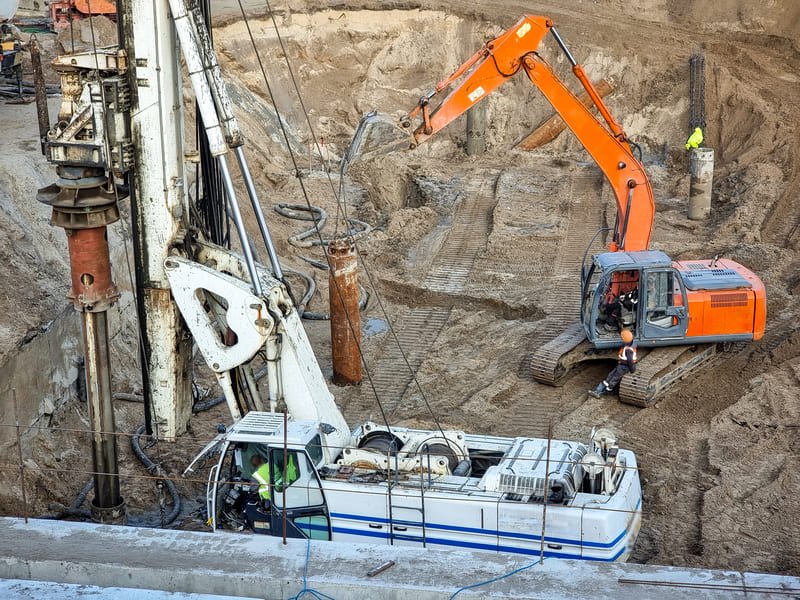
Understanding Drilling Parameters
Optimizing drilling parameters is crucial for effective heat management during operations. Key parameters include rotation speed, weight on bit, and air pressure. Adjusting these can significantly impact heat generation.
Rotation Speed
- Effect on Heat: High speed often generates too much heat, especially in hard rocks.
- Best Practices: Reducing speed in hard areas is helpful. This practice keeps the drill bit from overheating. Finding the right speed really helps maintain coolness. For instance, lower rotation speeds3 might help maintain optimal thermal conditions while drilling.
Weight on Bit (WOB)
- Balancing Act: Finding the right WOB is tricky. Too much weight increases friction and heat, while too little slows progress.
- Recommendation: Adjusting WOB according to real-time conditions keeps operations smooth. A balance table4 can guide operators in making these adjustments:
| WOB Range (lbs) | Rotation Speed (RPM) | Expected Heat Generation |
|---|---|---|
| 5,000 - 10,000 | 50 - 80 | Low |
| 10,001 - 15,000 | 30 - 50 | Moderate |
| > 15,000 | <30 | High |
Air Pressure
- Cooling Agent: Correct air pressure acts like an air conditioner for the drill bit. It cools effectively and removes debris.
- Air Pressure Management: Regular checks help keep air pressure stable. Low pressure raises overheating risks. So, methods to keep air pressure, like using optimized compressors, are useful. Exploring methods for maintaining air pressure, such as compressor optimization5, can be beneficial.
Real-Time Monitoring
- Importance: Monitoring drilling parameters continually is crucial. Sensors and real-time data help spot overheating early.
- Technological Tools: Invest in drilling optimization software that tracks performance metrics and provides feedback on necessary adjustments.
Effective Lubrication
- Role of Lubricants: I use high-quality lubricants to reduce friction and heat. Applying them often extends drill bit life and performance.
- Lubricant Selection Guide:
| Type of Lubricant | Application | Benefits |
|---|---|---|
| Synthetic Oil | High temperature operations | Reduced thermal degradation |
| Water-based Solutions | General drilling | Environmentally friendly |
| Graphite-based Lubricants | Extreme pressure conditions | Excellent friction reduction |
Flushing Efficiency
- Debris Removal: Effective flushing clears cuttings and stops regrinding. Using drills with optimized flushing holes enhances this process. Referencing design principles6 really boosts efficiency.
- Flushing Hole Design: Ensure drill bits are equipped with optimized flushing holes for maximum efficiency.
Maintenance Practices
- Routine Inspections: Regular checks are very important. I look for wear on seals and connections to avoid air leaks that may harm cooling systems.
Higher rotation speeds always reduce heat generation.False
This claim is false; higher rotation speeds can actually increase heat generation, especially in hard rock formations.
Regularly adjusting weight on bit improves drilling efficiency.True
True; balancing weight on bit based on conditions enhances efficiency and reduces heat generation.
How Can Cooling Prevent Drill Bit Overheating?
Have you ever found yourself in the middle of a drilling task, feeling anxious because the drill bit seems too hot? I know that feeling! Cooling really changes the game in stopping drill bits from overheating. Let me explain why.
Cooling is crucial for stopping drill bits from getting too hot. Air pressure is important for cooling. Effective flushing systems help. Proper lubrication is necessary. These strategies really increase drilling efficiency. They also help drill bits last longer. These methods are vital for any drilling work.
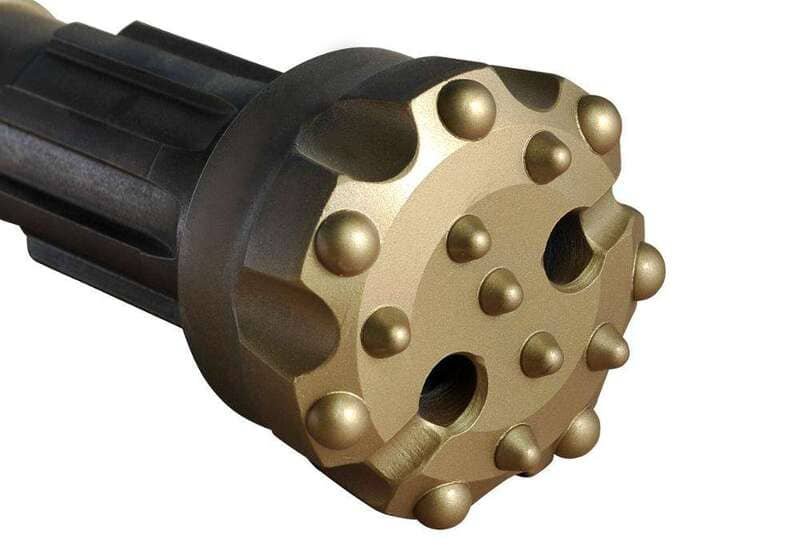
Cooling saves lives and helps with efficiency. It’s crucial for both equipment and people. I recall my first time seeing a drill bit overheat on a challenging job site. It was a big wake-up call. With some understanding of cooling systems, I’ve learned to keep my bits in excellent condition. I now avoid those expensive mistakes.
Understanding Drill Bit Overheating
Drill bit overheating is not just a small problem. It leads to serious issues, especially with hard rock formations. I’ve watched bits wear out too soon. This reduces efficiency and causes unexpected breakdowns. Heat can build up alarmingly fast. But good cooling keeps the temperature perfect. This makes a big difference.
Cooling Mechanisms in Drilling
-
Air Pressure Management
- Air pressure acts like your drill bit’s personal cooler. Keeping air pressure high is key during drilling work.
- Regularly checking the air flow system helps remove heat and debris. This makes everything run very smoothly.
-
Flushing Systems
- Flushing holes in drill bits function like built-in vacuums. They remove heat and debris effectively.
- Adequate flushing stops regrinding of old cuttings, which reduces friction and heat creation.
-
Lubrication Practices
- High-quality lubricants decrease friction well. I feel satisfied knowing I’m being proactive to keep my tools cool.
- Good lubrication keeps things cooler and extends the drill bit’s life; it is always beneficial!
Importance of Monitoring Cooling Efficiency
- Real-time Monitoring: Watching drilling factors like speed and weight allows for quick changes based on temperature readings, guiding these adjustments to make a huge difference.
- Temperature Sensors: Temperature sensors have revolutionized my approach by checking the drill bit's state and triggering cooling systems as needed.
Table of Effective Cooling Strategies
| Strategy | Description | Benefits |
|---|---|---|
| Air Pressure | Maintain adequate air pressure to remove heat | Enhances cooling and debris removal |
| Flushing | Utilize flushing holes to expel debris | Reduces friction and heat generation |
| Lubrication | Apply high-quality lubricants regularly | Decreases wear and prolongs bit life |
| Regular Maintenance | Conduct routine inspections of cooling systems | Prevents unexpected overheating issues |
Conclusion
In conclusion, effective cooling methods prevent drill bit overheating while keeping performance high and making equipment last longer. I’ve found these methods not only improve drilling efficiency but also save money on early tool replacement. Want to learn more about improving your drilling processes? Explore drill cooling techniques7. You certainly won’t be disappointed!
Cooling prevents drill bit overheating during operations.True
Effective cooling strategies are essential to maintain optimal temperatures and prevent overheating, which can lead to equipment failure.
Air pressure management is irrelevant for drill bit cooling.False
Maintaining adequate air pressure is crucial for effective cooling and debris removal during drilling operations.
Why Is Proper Lubrication Essential for Drill Bit Longevity?
Proper lubrication is vital for extending the life of drill bits. Reducing friction and heat is important for tools to work smoothly and efficiently.
Lubrication is very important for drill bit life. It reduces friction. It stops overheating. This really helps performance. It also extends the life span. Regular use of good lubricants prevents early wear. It also avoids downtime in operations.

Understanding Lubrication and Its Role
Proper lubrication is not just important; it really changes everything. It creates a protective layer between the drill bit and the material, lowering friction to prevent heat from causing damage. I once did not lubricate my drill bit during a very hard project, which resulted in intense heat and a worn-out bit that needed quick replacement. This tough lesson showed me how essential lubrication is to keep drilling tools lasting longer. A good lubricant can reduce the friction coefficient from 0.2 to 0.1, effectively doubling the life of your drill bit under similar conditions. It’s like giving your tools a spa treatment.
Types of Lubricants
| Different lubricants suit different needs in the drilling process. Here’s a brief overview: | Type of Lubricant | Purpose | Example Products |
|---|---|---|---|
| Oil-Based Lubricants | Reduce heat and wear | Hydraulic oils, mineral oils | |
| Water-Based Lubricants | Flush debris, cool bits | Water-soluble oils, emulsions | |
| Grease | Provide long-lasting lubrication | Lithium grease, synthetic grease |
The selection of the right lubricant is crucial for optimal performance. Oil-based lubricants work well for heavy-duty drilling because they handle heat very effectively, while water-based lubricants keep debris away during drilling.
Impact of Insufficient Lubrication
Ignoring lubrication causes problems:
- Increased Heat Generation: Without lubrication, friction and temperature both rise.
- Premature Wear: Heat speeds up bit wear - trust me, you really don’t want frequent replacements.
- Operational Downtime: More failures mean more downtime, which results in lost work time.
Studies show that consistent lubrication reduces wear rates by up to 50%. That's very significant!
Best Practices for Lubrication
To extend the life of your drill bits, try these tips:
- Regular Application: Set up a schedule for lubrication based on your work conditions - it has saved me often.
- Monitor Performance: Watch how your bits perform and adjust lubricants or timings as needed.
- Use Correct Amounts: Too much lubrication isn’t good; find the right balance for your needs.
- Choose Quality Products: Buy high-quality lubricants made for drilling tasks.
Following these steps has really improved my drill bits' efficiency and durability. Learn more about optimal lubrication techniques8. By adhering to these practices, one can significantly enhance the performance and durability of drill bits. Explore more about maintaining drill bits9.
Proper lubrication reduces friction and heat in drill bits.True
Lubrication minimizes friction, preventing overheating and extending drill bit life.
Water-based lubricants are best for heavy-duty drilling.False
Oil-based lubricants are preferred for heavy-duty tasks due to better heat dissipation.
What Are the Best Maintenance Practices to Avoid Overheating?
Have you ever sat in your car, worried it might get too hot? I know the feeling! Let's look at some important tasks to keep your engine cool. These steps also help your car last longer.
Check fluid levels often in your vehicle to prevent overheating. Take care of the radiator regularly. Use high-quality lubricants for better performance. Follow a strict maintenance schedule to keep the cooling system running smoothly. These steps are really important.
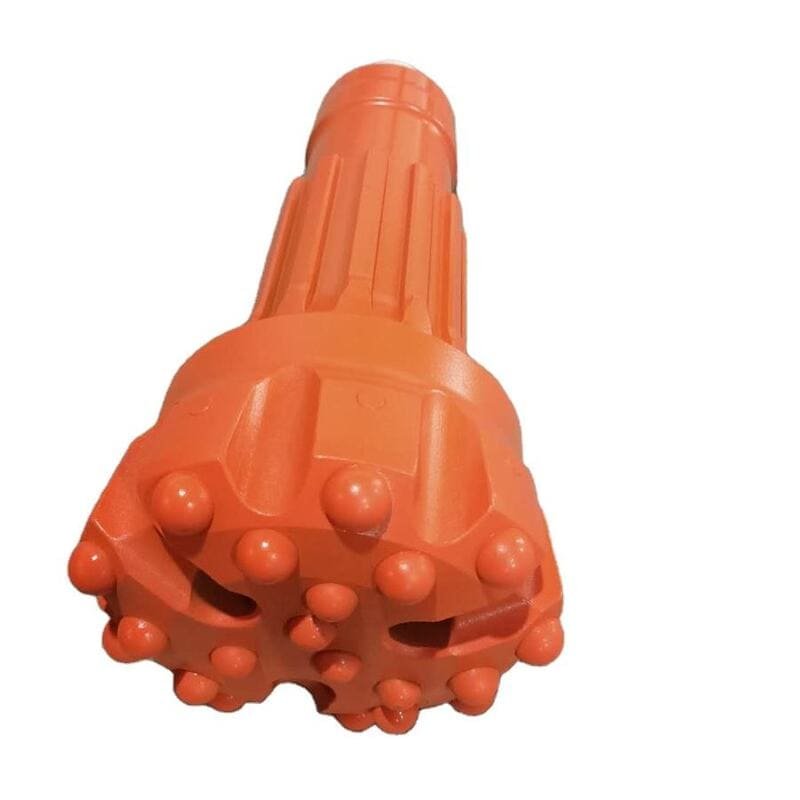
Optimize Drilling Parameters
To stop overheating, it is crucial to adjust drilling settings. This means changing rotation speed, bit weight and air pressure based on drilling conditions. I remember drilling through hard rocks once. Slowing the rotation speed made a huge difference. It lowered heat and kept our tools safe.
Proper Cooling
Keeping the right air pressure is necessary for cooling and removing debris. I think of the air system like a personal air conditioner for the drill. Checking air pressure systems helps keep cooling processes top-notch. Just like I check my car's coolant before a long trip. This avoids surprises.
Use Good Lubrication
Using high-quality lubricants often helps lower friction and heat during drilling. I once skipped lubrication because I was in a hurry. That mistake cost me money. The equipment got too hot and stopped working. Now, I always follow a strict lubrication schedule.
Effective Flushing
Using flushing holes in the drill bit helps remove debris and cool down the drilling area. Proper flushing stops the re-grinding of cuttings, which can increase friction and heat. It’s like cleaning my car’s filters. It keeps everything working well.
Routine Maintenance
Doing regular inspections helps find possible problems that cause overheating. Last month, I checked my car’s seals and connections for air leaks. It saved me from a breakdown during a road trip! Regular maintenance finds issues early before they become expensive.
Right Bit Selection
Choosing the right bit for specific jobs and ground conditions lowers friction and heat during drilling. I once picked the wrong bit for a job. It was a lesson learned! Knowing which bits work best with different systems has been very valuable. It prevents overheating in tough environments.
| Maintenance Practice | Importance | Benefits |
|---|---|---|
| Optimize Drilling Parameters | Reduces heat generation | Maintains optimal drilling efficiency |
| Ensure Proper Cooling | Facilitates effective cooling | Prevents overheating and maintains performance |
| Use Appropriate Lubrication | Reduces friction | Prolongs life of equipment |
| Implement Effective Flushing | Removes debris and dissipates heat | Improves drilling efficiency |
| Regular Maintenance | Identifies potential issues | Prevents costly repairs |
| Select the Right Bit | Reduces friction and heat generation | Enhances operational efficiency |
For more details on each practice, maybe explore advanced cooling techniques10, the role of lubrication in machinery11 and best maintenance schedules12. By sharing these experiences and tips, I hope you feel ready to maintain your vehicle or equipment. Keep them cool under pressure!
Regular maintenance prevents costly repairs from overheating.True
Routine checks can identify issues early, avoiding major breakdowns and expenses related to overheating.
Using high-quality lubricants reduces friction during drilling.True
Proper lubrication minimizes heat buildup and prolongs the life of drilling equipment, enhancing performance.
How Does Selecting the Right Drill Bit Impact Heat Generation?
Did you ever feel upset about tools getting too hot during drilling? The right drill bit choice is important. It helps keep your equipment safe. It also makes your job simpler. So, let’s explore this very important subject!
Choosing the right drill bit very much affects how much heat is produced. The right drill bit reduces friction. It also increases durability and helps cool down more effectively. A well-selected bit cuts down the chance of overheating. It also extends the tool's life. Overall, it really improves drilling performance.
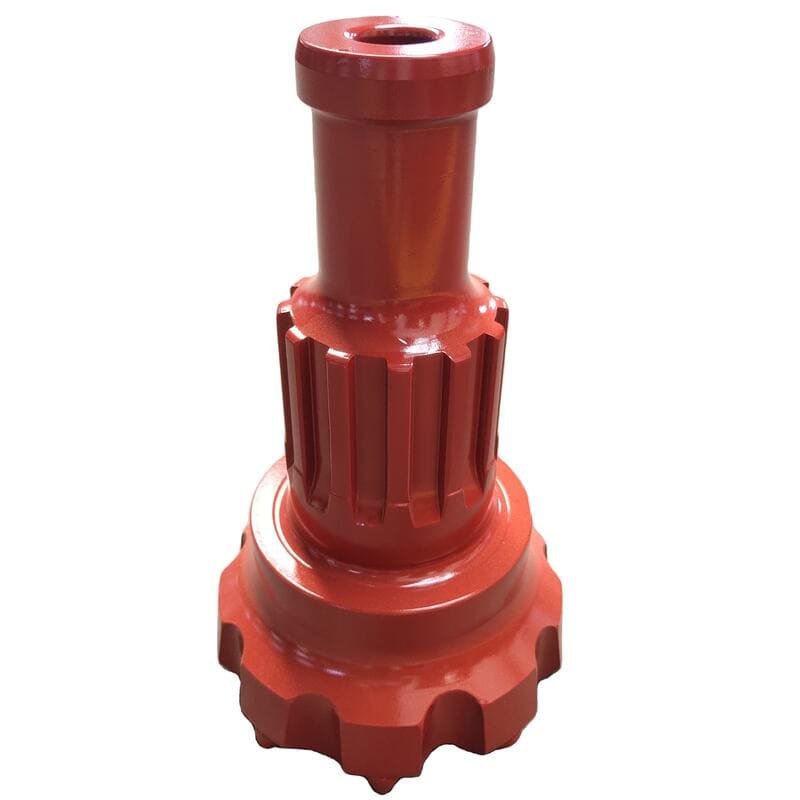
Understanding Drill Bit Types
The drill bit type truly affects my projects, especially when managing heat. The type of drill bit selected plays a crucial role in heat generation during drilling operations. Different materials and designs impact the friction and heat produced. For instance, carbide bits are generally more durable and can withstand higher temperatures, making them suitable for tough materials. In contrast, high-speed steel (HSS) bits may not handle heat as effectively.
When I switched from HSS bits to carbide bits while working with metal, the difference was very noticeable! Carbide bits last longer and bear higher temperatures. They are perfect for harder materials. HSS bits struggled; they created too much heat and wore out fast. This showed me why knowing drill bit types is really important.
Using the right bit can drastically reduce overheating by minimizing friction. For example, this comparison13 outlines the benefits of choosing tungsten carbide over HSS in various applications.
Material Composition Matters
I now know that the bit's material affects heat control. Each material has strengths and weaknesses. Here’s a quick overview of common drill bit materials and their heat resistance:
| Material | Heat Resistance | Best Use Cases |
|---|---|---|
| Tungsten Carbide | High | Hard rock, metal |
| High-Speed Steel (HSS) | Medium | Wood, plastic |
| Cobalt Steel | High | Stainless steel, alloyed metals |
Choosing the right material for my tasks is crucial for controlling heat. Selecting a material that aligns with the drilling task can help control heat levels effectively. Explore more about material choices14 to find the best fit for your needs.
Bit Geometry and Design
Drill bit design, including geometry and flute shape, also affects heat generation. Once, a wrong flute design made too much heat and stopped my work. Bits designed with optimal flutes allow for better debris removal and cooling, reducing friction and heat accumulation.
Key Design Features:
- Flute Design: Wider flutes improve chip clearance and cooling.
- Point Angle: A sharper point can penetrate materials more easily, generating less heat during drilling.
If you want more details on these designs, explore this detailed guide15.
Cooling Techniques and Their Importance
Learning about cooling methods changed my drilling approach. Proper cooling is really important for keeping bits in good condition under stress. These include:
- Air Cooling: Letting air move around the bit is like a personal air conditioner for the drill!
- Fluid Cooling: Utilizing cutting fluids helps a lot with dissipating heat effectively.
Checking air pressure systems regularly helps keep cooling at its best. Proper cooling is essential to maintain bit integrity and performance under high-stress conditions. Learn about cooling methods16 to keep your equipment in optimal condition.
Conclusion of Insights
Understanding how drill bits impact heat helps me choose wisely which improves efficiency and tool longevity. By understanding the impact of drill bit selection on heat generation, professionals can make informed choices that lead to enhanced drilling efficiency and extended tool life. Keep these factors in mind to avoid overheating risks in various applications.
Carbide bits generate less heat than HSS bits during drilling.True
Carbide bits are more durable and withstand higher temperatures, reducing heat generation compared to HSS bits.
Wider flutes on drill bits increase heat accumulation.False
Wider flutes improve chip clearance and cooling, which helps reduce heat accumulation during drilling operations.
Conclusion
To prevent DTH drill bits from overheating, optimize drilling parameters, ensure proper cooling and lubrication, implement effective flushing, conduct regular maintenance, and select the appropriate bit.
-
Clicking this link will provide valuable insights into effective cooling systems for drill bits, helping you prevent overheating issues. ↩
-
This resource will help you understand the best practices for managing debris accumulation while drilling, which is crucial for preventing overheating. ↩
-
Discover advanced techniques for optimizing drilling parameters to enhance heat management efficiency. ↩
-
Learn about the latest technologies in real-time monitoring of drilling operations to prevent overheating. ↩
-
Explore effective lubrication methods that can help reduce friction and manage heat during drilling. ↩
-
Understand the importance of flushing efficiency in reducing heat generation during drilling activities. ↩
-
Discovering best practices for drill bit cooling can significantly improve drilling efficiency and reduce equipment failures. ↩
-
Clicking this link will provide you with detailed insights on optimal lubrication techniques that can improve your drilling operations. ↩
-
This link offers valuable information on maintenance practices to enhance drill bit performance and longevity. ↩
-
This link provides valuable tips on enhancing vehicle cooling systems, ensuring efficiency and longevity. ↩
-
Learn about the importance of regular vehicle maintenance to prevent overheating issues effectively. ↩
-
Explore advanced lubrication techniques that help reduce friction and overheating in vehicles. ↩
-
Discover expert insights on drill bit selection and its impact on heat generation, ensuring your projects run smoothly. ↩
-
Learn more about drill bit materials and their heat resistance to enhance your drilling efficiency. ↩
-
Explore effective cooling techniques for drill bits to prevent overheating and ensure optimal performance. ↩
-
Find out how drill bit geometry influences heat generation and choose wisely for your projects. ↩

